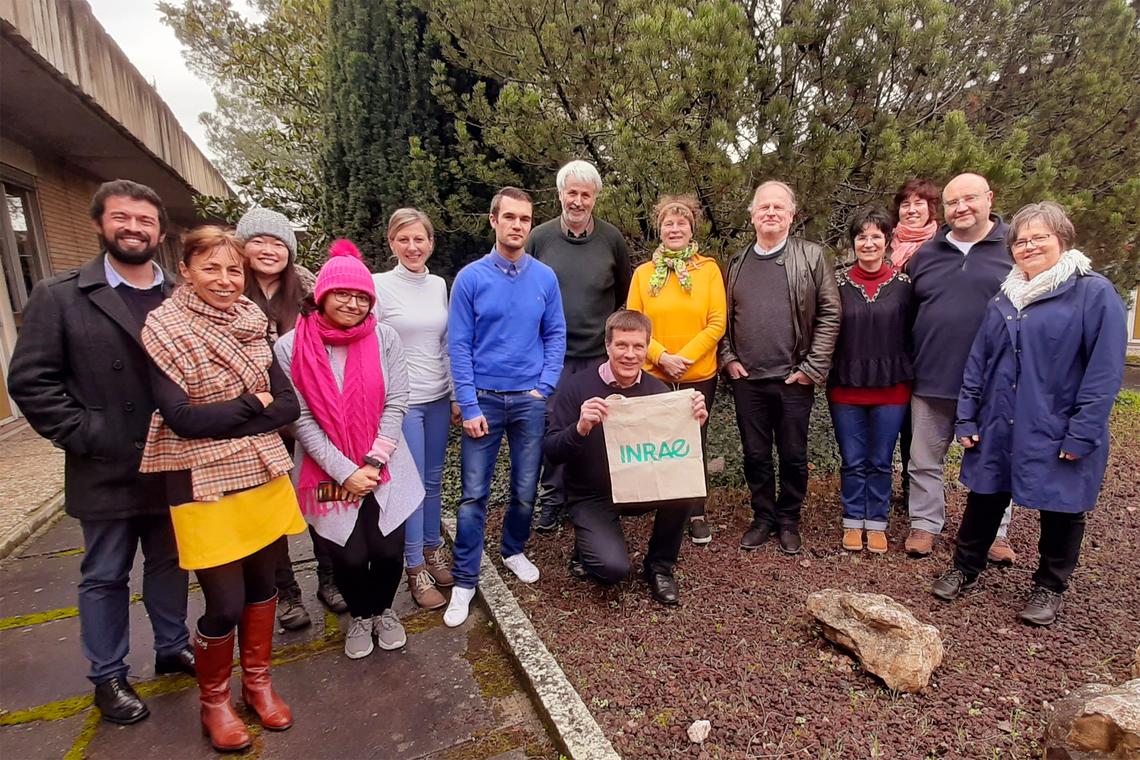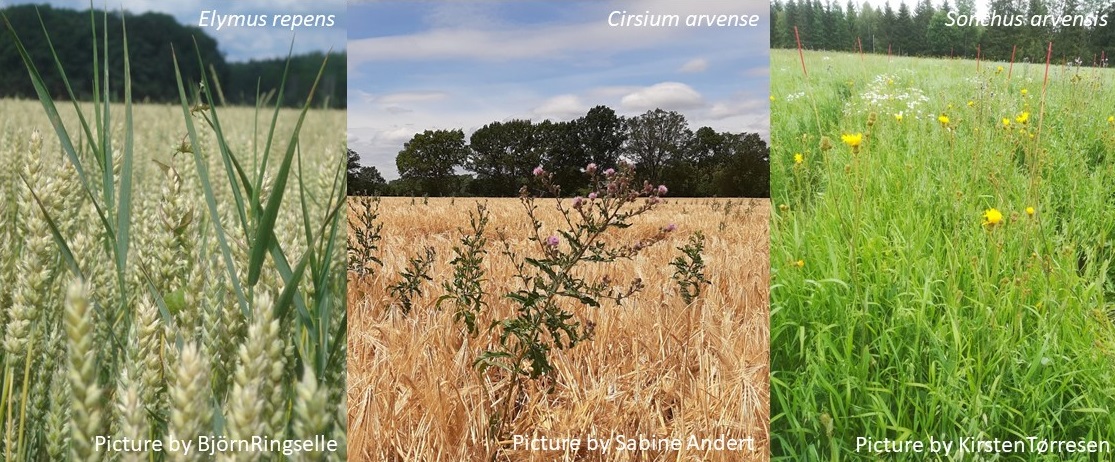Future management of arable perennials - an introduction to the project AC/DC-weeds
Posted on March 12th, 2020 on 13:18:08 by Sabine Andert

ACDC-weeds is a European project funded by SusCrop ERA-NET (2019-2022).
AC/DC - a new European project on management of perennial weeds
Funded by SusCrop ERA-NET, AC/DC-weeds is a multi-national project involving seven partners from five EU member states. Started on 1st April 2019, the duration of this project is three years. Its partners include University of Rostock (Germany), Norwegian University of Life Sciences and Norwegian Institute of Bioeconomy Research (Norway), Natural Resources Institute Finland (Finland), University of Copenhagen (Denmark), INRA - AGroecologies, Innovations & Ruralities and INRA Environment and Agronomy (France).
Creeping perennial weeds strongly influence arable production, causing crop quantity and quality losses unless controlled. These weeds ensure their lifeform by subterranean storage organs (e.g., roots, rhizomes). Besides seed dispersal, their subterranean clonal systems facilitate survival and spatial spread in arable fields by vegetative sprouting. Some creeping perennial species are strongly adapted to arable land where intensive crop production occurs.
The common practices of arable farmers to control creeping perennial weeds are intensive inversion tillage and herbicides (especially glyphosate). However, intensive inversion tillage by ploughing not only consumes lots of energy, but also diminishes the soil biological activities. Indiscriminate use of herbicides has side effects on human health, non-target species, and the wider environment (e.g., water quality). Agro-ecological management practices claim that sustainable agricultural systems should rely as much as possible on ecological processes to ensure long-term food security, human welfare and environmental protection. Indeed, integrated weed management for perennial weeds demands to explore, compare and evaluate such novel strategies.
The objective of AC/DC-weeds is to implement more and better agro-ecological management practices the three creeping perennials Sonchus arvensis, Cirsium arvense and Elymus repens in arable farming. The overall aim of this project is to reduce plough-tillage in organic and conventional farming, and to replace glyphosate in the latter system.
The three year project contains seven work packages (WPs), each aiming to use the most advanced methodology to achieve the following research objectives:
WP Disturbance: Through field experiments, examine the perennial weed control efficiency of novel mechanical tillage tools (root cutter), subsidiary crops, and bioactive herbicides.
WP Competition: Conduct meta-analyses to quantify the efficiency of competition process by subsidiary crops on perennial weed regulation and to analyse the sources of variability and to relate the effects to crop traits.
WP Species: By literature review and small scale experiments, expand ecological data and knowledge for three most important perennial weed species in central and northern Europe (Elymus repens, Cirsium arvense and Sonchus arvense).
WP Monitoring: Based on the best UAV (unmanned aerial vehicle) technology, improve mapping procedures of perennial weeds in arable fields.
WP Modelling: Develop a new qualitative modelling of perennial weed management practices based on combined control methods, soil, weather and the environment.
WP Graphic Web Tool: Design a graphic web tool to support end users with accessible and specific information on the efficiency of management options on perennial weeds.
WP Coordination: Explore environmental and economic effects of agro-ecological management strategies to support project communication and dissemination.
For more information please visit the other sections of our website - http://acdc-weeds.info
2296 x viewed | 31 Likes -
Message to the author
Filter by theme
Filter by Working Group
How can I submit a post?
We would like to welcome you as a contributing author for the EWRS blog. Please contact the Communication Officer, Camilla Moonen. She can give you writing access to the blog. After that, you can start writing articles for the blog, from the 'My Account page'. More information can be found on the "How to use the Blog page".

